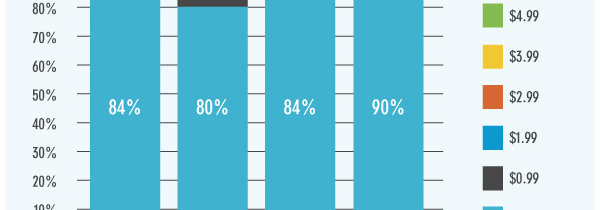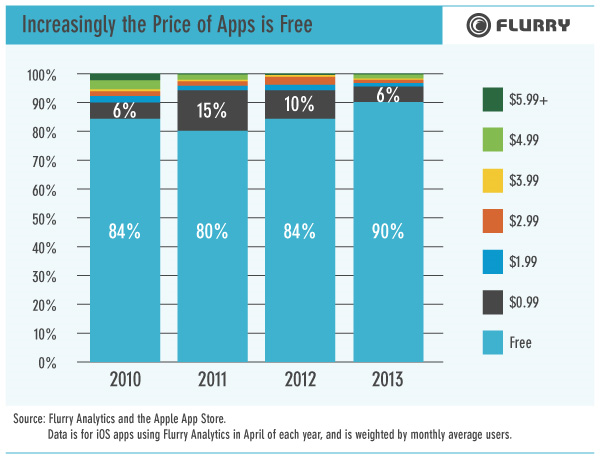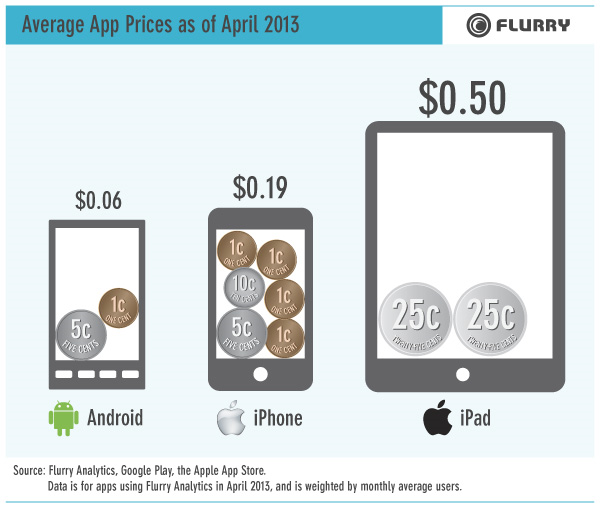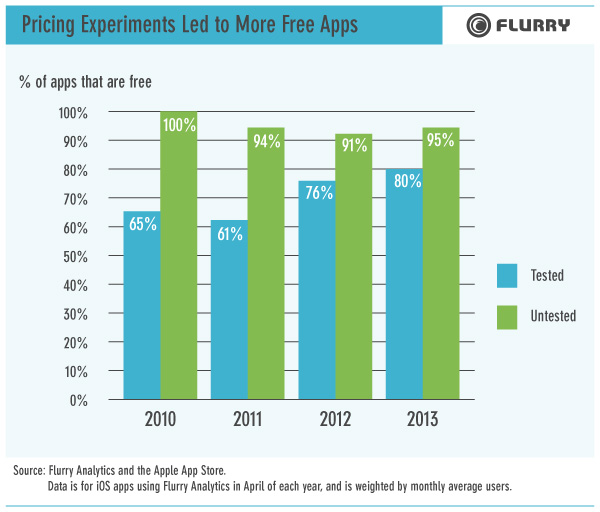Why the Freemium Models Works and the History of App Pricing
Despite the fact that countless consumer surveys make the claim that most of us hate seeing ads on our smart devices, the reality of the matter is: when it comes to paying for apps (even just .99cents) vs tolerating ads we overwhelmingly favor the free apps and tolerate the ads. This is at least according to Flurry, who has analyzed data from the past four years with pricing information for nearly 350,000 apps that use the Flurry Analytics platform.
It is true that the apps found on our devices say a lot about who we are, but they also reveal our opinion of what type of monetization strategy we prefer to support. Those being (of course) paying for the content (the app) directly, or indirectly, and implicitly by agreeing to view ads. These days, most apps fall in one of two categories: Premium or Freemium – apps you pay for (usually $.99 or $1.99) and apps you download for free and have the option to pay for later (regardless of what format that may be).
Below are the findings of what Flurry has discovered since analyzing the data from both iOS and Google Play. They do note however that their measurements are weighted by user numbers, meaning the apps with more users contribute to an over-all greater trend. The overall consensus being: people want content (apps) to be free. See below for more details.
As depicted in the image above the trend for free apps/content has been mostly upwards with the exception of 2011. Flurry says:
“Some might argue that this supports the idea that “content wants to be free”. We don’t see it quite that way. Instead, we simply see this as the outcome of consumer choice: people want free content more than they want to avoid ads or to have the absolute highest quality content possible.”
When it comes to Android, they’re EVEN LESS willing to pay for apps (content).
Note the image below for the average app prices as of April 2013.
It is said by many experts that those with iPads are willing to pay more for quality content on a bigger screen. Many surveys and studies have also proven this to be true since iPads and tablets and general result in similar behavioral patterns to that of a TV.
Furthermore, it has been deduced that developers decision to change their apps from paid to free is mostly data driven, but perhaps maybe even as a result of the competition of the countless of other free apps out there. There were also a large percentage of developers who tested the theory themselves (through A/B testing) to determine which worked best. See below for Flurry’s findings.









